Mini Ninjas - A retrospective on one of my favourite games of all time
Also my longest post to date!
Hello, and welcome to another game review. It has been a while since my last review on Substack. Back then, I covered one of my favourite games in recent memory: Genji (or Genji: Dawn of the Samurai if you’re in North America.) Today, I am covering a game that is very near and dear to my heart.
We all have that one piece of media that we always come back to. Whether it be a TV Show or a movie that we love, whether it is a book or a video game. There’s always something about that specific piece of media that always grabs us. One particular game always brings me back. It is a game called ‘Mini Ninjas’. It’s… one of my favourite games of all time. I have pretty much grown up with it.
For a little background, Mini Ninjas is a very obscure game from 2009. Back then, it was a really big year in the gaming industry. We had Halo 3: ODST, Mario and Luigi: Bowser’s Inside Story, Assassin’s Creed 2, New Super Mario Bros Wii and more release. With so many games releasing that year, it was no surprise to me that this game fell under the radar.
As for who developed this game, Mini Ninjas was developed by IO Interactive, the very same people who made the Hitman series (yes, that Hitman series!) It was honestly quite poetic to play Hitman many years later.
It was released for pretty much every platform available at the time, from the PC to Mac, PlayStation 3, Xbox 360 and Wii. The PC, Mac, PS3, Xbox 360 and Wii versions are pretty much the same game.
There was also a version made for the DS, which its own unique game. Instead of IO Interactive, the development of the DS version was handled by a French Developer named Magic Pockets, who worked on Baldur’s Gate: Dark Alliance and Cartoon Network Battle Crashers.
Figure 1: The poster for the game
I have played this game on the Wii, DS and on PC. Whilst I would prefer to show you snippets of the game from the Wii, you’re going to have to settle for various screenshots taken from a playthrough I did on the PC version. I will be comparing the two games from memory as they are quite different in terms of graphics, sound and, in some places, level design. As for the DS version, I will bring it as well.
Sadly, I couldn’t get any recording software to work that will allow me to take screenshots of the DS version. So, you’re going to have to deal with screenshots I’ve found online.
As per my game reviews, my review criteria will be as follows:
· Graphics and Art style – Does it look good? Has it aged well?
· Gameplay – Is it any fun to play? What’s the level design like? What are the enemies like?
· Story – What is the story like? Is it any good? Is it simple and easy to follow, or is it complex and thought-provoking?
· Music and Sound design – How the game sounds? Is the music great? Does the game sound off in some places?
Without further ado, let’s dive right in!
Graphics and Art Style:
Well, what’s there to say about the graphics and art of this game? How can I describe how it makes me feel? Only one word comes to mind for me: timeless.
Mini Ninjas is, at its most basic, a kid’s game. Well, back then it qualified as a kid’s game. From a nostalgic point of view, these graphics are timeless, and they bring me back to when times were simpler.
From a critical standpoint, these graphics are perfect. Not only did it look great back then, but it has also aged like a fine wine. Compared to a Call of Duty game from that time, or another gritty game that was trying to aim for realistic graphics, the art direction and the graphics have stood the test of time.
Another thing that has stood out for me is the use of colour. Colour is an important aspect when it comes to good graphics as you would need things to be easily identifiable and to not blend in with one another. It also helps that the right colour can be utilised to help create unforgettable and eye catching images.
Figure 2: Hiro standing on a hill overlooking Ninja Village, the first area in the game. This was taken from the PC version of the game, hence the high quality.
Looking at this image of Hiro, the main protagonist. The game utilizes colour exceptionally well. Everything here is easily identifiable, from the trees to the Hiro himself. In my opinion, this is what a kid’s game should look like.
Of course, if it was made for today’s kids, the developers would crank the saturation up to the max and completely ruin the overall aesthetic of the game. I’m looking at you Fortnite!
But what they did here was perfect. Everything is as it should be. And this continues all the way throughout the game as well. Every single level uses its art style to great effect, from tranquil bamboo forests to an abandoned graveyard, a waterfall at sunset, and even the mountains themselves. Everything is eye-catching and almost nostalgic in a way.
Figure 3: A Screenshot of Hiro in the level, 'Great River Canyon'. I will say right off the bat that this is my favourite level in the whole game.
The effect isn’t lost in the Wii version either. Due to the Wii’s hardware limitations, it couldn’t replicate the graphics that are found in the Xbox, PS3, PC and Mac versions. This results in a little bit of a lower texture quality that gives everything a little compressed look to it.
Whilst I would like to complain about this, I actually find it works to the Wii Version’s credit! This is especially paramount in the level ‘Haunted Forest’ where the lower quality graphics give an especially unsettling and creepy vibe.
Speaking of water, I’m impressed with what the developers had done with it in the PC and console versions.
This is also especially useful in the level ‘Flooded Valley’ as it helps mark out which areas are shallow enough to walk in, and which areas aren’t.
Figure 4: Concept art for the level 'Grassy Hills'. Interestingly, this concept art seems to indicate the level was originally going to take place during broad daylight. In the final game, it seems to take place in the extremely early hours of the morning.
Figure 5: The final artwork used for 'Grassy Hills'.
The DS version’s graphics however are somewhat decent for its time. This is again because of the fact that the Nintendo DS was a handheld, as such it wouldn’t have the same power and capabilities of a console or PC. But what it does pull off, it does it quite well in most areas. In some cases, I find that the graphics can be quite blurry and that the art style in the DS version is… kind of mediocre.
Whilst everything is decently coloured and identifiable, the poor quality textures of the DS version tend to make the game almost look like it was running on a Nokia cell phone from the same era. That is all I have to say on the graphics and art style of Mini Ninjas.
Figure 6: A screenshot from the DS version – courtesy of IGN
Verdict of both versions:
Overall, the graphics and art style of Mini Ninjas can be summarised as charming and almost cutesy. As it is a kid’s game from 2009, this is to be as expected. here’s my score for each version.
For the Console and PC versions, I will give the Graphics a solid 9/10. As for the DS version, it will receive a 6.2/10.
Figure 7: Hiro on a lake filled with lanterns.
Gameplay:
For this section, I will be looking at the gameplay of the Console and PC versions, compared to the DS version. I have separated them out based on the respective versions of the game. Firstly, we’ll look at the Console and PC versions in depth, before going over the DS version.
Console/PC Version:
The gameplay for the Console and PC versions of Mini Ninjas is that of a typical action adventure game with stealth mechanics. Ideally, as you’re playing as a group of ninjas, you would want to use stealth to your advantage. Of course, if you suck at stealth, or you just want to kill everything in your way, you have the option to attack your enemies head on. Combat in this game is very simple, yet it feels satisfying.
Defeating an enemy turns them into an animal, which is a really clever way of making the game appealing to kids. It also causes them to drop one of three different orbs: yellow experience orbs which give experience, blue Ki orbs that not only give experience, but also replenish a small amount of Ki, and red orbs which not only reward experience, but also allow your character to perform a special attack! The amount of special attacks you can perform are indicated by a red circle on the right of the screen, as shown in this screenshot. Pressing the assigned button on the PC and Console versions will start the attack.
Each special attack is different, from targeting multiple enemies for an instant kill to turning into a ball, charging at an enemy, hypnotising a group of enemies, managing a crowd with a spear dance and launching an exploding arrow at a group of enemies.
Figure 8: Hiro wearing a Kasa hat standing on a bridge looking at some archers. Here, you can see how the HUD is laid out. In the bottom left corner, you can see your XP meter, your Ki meter (the blue line) and your health, which is represented by the hearts above the Ki meter. On the bottom right, you can see what item you have equipped, above that, you can see the Power Attack gauge (the red circles).
There is also a levelling up system in place as well. To level up, you would need to accumulate enough experience to fill up a little circle. You can see it in the bottom left of this screenshot next to the health and Ki meters. Every time you level up, your attributes will increase. For example, you can receive more health, more ki and can target more enemies with your power attack!
When you reach Level 2, you’ll gain the ability to sprint, which is especially useful in tough situations.
Reaching Level 15, will upgrade one of your spells, allowing you to take control of any Blue Samurai enemy. This is insanely useful as it will grant you some additional health atop your current health and it allows you to sneak by the enemies a bit more effectively.
Figure 9: A screenshot of the Skills panel in the Inventory Menu. The Level of the player is displayed here. The health, Ki and Power Attack status is shown with an orange icon.
You are given a decent amount of characters to play as. Each of them have unique attributes that work well to their advantage. They are as follows:
· Hiro – Your typical swordsman who fights with a Ninjato. Whilst he may not appear to be anything special, what sets him apart from the rest of the cast is his ability to use cast spells. Couple that with his special attack, which targets more enemies as you gain experience, this makes Hiro the strongest character in the entire game.
· Futo – A large, fat person who is not really suited for stealth. What sets him apart from the others is his strength and ability to use a massive wooden hammer. This is especially useful for fighting larger enemies who can’t be damaged by the other characters. His special attack however is kind of interesting. He can turn himself to a ball which can knock over most enemies until his stamina runs out. It is useful for covering distance and bowling over katana samurai, but it is ineffective against larger enemies and spearmen.
· Suzume – She uses a shakuhachi flute in combat, which is absolutely hilarious. She isn’t as strong as the others, but she does have a useful ability to stun a large crowd of enemies with her special attack.
· Shun – The archer of the group. He is especially useful for picking off enemies from a distance. His special attack is also incredibly useful for dealing with groups of enemies or particularly strong enemies.
· Tora – By far the most unique one. Tora’s fighting style revolves around using clawed tekko-kagi, and there’s a reason for that: he literally thinks he’s a tiger. He’s wild, chaotic and unpredictable. The only reason I use him is because of his sprinting speed and his special attack, which can cover a great distance.
· Kunoichi – She uses a naginata spear in combat, which is useful for crowd control. I wouldn’t recommend using her against the Yari Samurai, who can easily counter her attacks. Her special attack involves performing a dance with her spear, which can instantly kill almost any enemy.
Figure 10: Artwork of Hiro and a group of unknown ninjas infiltrating a castle. This artwork was used in the final game as the key art for 'Earth Castle'
Speaking of combat, you have a wide variety of ways to defeat enemies. You can melee attack them head-on, you can pick them off with a bow, you can use shuriken, caltrops, bombs that give varying effects or you can use some of the games many spells.
Among your items, you are given a kasa hat. This hat may not appear as much, but it is surprisingly versatile. You can also use your hat as an arrow shield. It’s very useful, but the main disadvantage is that you can’t attack while wearing it. Not only that, but you can also use it as a boat when in a body of water, or in some levels, it is used as a sled!
Figure 11: Hiro using the Kasa hat as a sled
Figure 12: Hiro kicking an apple tree. Throughout various levels, you can find trees and bushes with fruit on them. Knocking some fruit off and picking them up will restore some of your health!
As for the rest of the items, they are as follows:
· Cherry Bomb – A bomb that instantly explodes. Really useful for dealing with blue regular samurai and damaging wooden archery towers.
· Smoke Bomb – When used, it makes the player invisible for a short time. Really effective for stealth playthroughs.
· Pepper Bomb – When used, it creates a cloud of pepper that deals a low amount of damage and causes the enemies to sneeze.
· Time Bomb – Similar to the Cherry Bomb, except that the explosion is on a timer.
· Shuriken – Useful for stunning enemies, especially Yari Samurai.
· Caltrops – Effective at slowing down enemies, deals a low amount of damage.
· Sushi – Restores a small amount of health, can be obtained through fishing.
· Fishing Rod – It is required for fishing and can only be used by Hiro. In the middle of the game, you obtain an upgraded fishing rod that is required to access the third castle area.
· Honeycombs – The best healing item in the game. You can find it in some levels in bee nests, or several pots in the endgame. Using this fully replenishes both your health and Ki. Obtaining these from bee nests are very risky.
There is also surprising amount of potions you can obtain or craft. All of them have a wide variety of effects. Here they are as follows:
· Healing Potion – Does what it says on the jar, especially useful in combat.
· Flask of Strong Ginseng – When used, it restores all your Ki. This is especially useful as Ki is used for both your stamina and to cast spells.
· Flask of Arrow Shield – When used, it creates an energy shield that can deflect enemy arrows. This is especially useful as you can attack whilst the shield is up.
· Essence of the Fish – A fun little potion that can turn the user into a Koi Fish. It is also the only way to play as a fish as well.
· Flask of Unstable Energy – When used it replenishes three special attack orbs and is useful if you desperately need to perform a special attack.
· Burping Potion – An… interesting potion. When used, your character will burp, and a nauseous cloud will appear. Whilst I would write it off as an unimportant item, it is able to stun some enemies for a short while.
· Flaming Oil Potion – Probably the most overpowered potion in the game. When used, it sets the player’s weapon alight and is able to bypass an enemy’s defences.
· Flask of Strange Brew – This one’s just weird. An unpredictable item that can have a variety of effects. Sometimes nothing will happen, but there is a 50/50 chance that the potion will grant the user unlimited stamina and ki, but at the cost of a drunken camera and odd screen effects. My guess is that it is the game’s equivalent to Sake, a popular alcoholic drink in Japan.
· Samurai Healing Brew – This item is an interesting one. It heals the player a small amount of health, but it has a price. Every time it’s used, you lose a small amount of Ki, making this item a double edged sword.
Figure 13: A screenshot showing every item in the game. All the spells are present here as well (See the top row). The spells are (from left to right): Detect Kuji Shrine, Spirit Form, Fireball, Tornado, Camouflage, Lightning Storm, Sunrays, Sonic Boom, Wall of Wind, Ice Storm, Slow Time and Meteor Storm
Figure 14: All the craftable potions in the game. From left to right: Healing Potion, Flask of Unstable Energy, Flask of Arrow Shield, Essence of the Fish, Flask of Strong Ginseng, Burping Potion, Flask of Strange Brew, Flaming Oil Potion.
I absolutely love this amount of variety and the amount of stuff you can pull off is incredible. For instance, if you’re blocked by a bunch of spearmen, you can pick them off with your archer, use a bomb or you can use a tornado, fireball or even a storm to remove them. If you’re surrounded on all sides, you can use a storm to help mitigate the enemies.
Figure 15: Hiro battling a Blue Katana Samurai
Speaking of spells, there are a surprising amount of spells in the game – twelve of them in total. Some of them are incredibly useful, others aren’t. Here is a list of all the spells in the Console and PC versions:
· Detect Kuji Shrine – This is the first spell you obtain, and it is especially useful if you want to find the rest of the spells in the game.
· Spirit Form – An especially useful spell, which allows you to possess any animal you come across. Every animal has a unique set of animations from a chicken laying an egg, to a cat hissing. You can even use it to control animals like bears and boars to attack enemies! When you max out your stats, this spell will allow you to possess any regular blue samurai and take control of them!
· Fireball – A personal favourite of mine, as the name suggests, it allows you to conjure a ball of fire that can deal a surprising amount of damage to enemies.
· Tornado – Conjures a tornado that grabs any small enemy and carries them into the air, before dropping them.
· Lightning Storm – Another personal favourite of mine. Conjures a lightning storm that has a massive Area of Effect. It can sometimes instantly kill enemies.
· Camouflage – Turns your ninja into a leafy bush. Useful for sneaking around blue regular samurai, not so much for the Samurai captains or Red Samurai.
· Sunrays – Conjures bright sunrays that can illuminate an area. It is useful for stunning enemies and is the only spell that is effective against the Yurei enemies.
· Sonic Boom – Conjures a powerful shockwave that can launch enemies back and stun them for a period of time. Whilst it can be useful for crowd control, I tend to avoid using this spell as the many other storm spells are much more effective.
· Wall of Wind – This spell is just stupid. When using it, it should conjure a wall made of wind. This wall would be effective at slowing down pursuing enemies or deflecting arrows. However, there is nowhere in the game where I have been able to find an effective use for the spell, as you can use any other spell or even caltrops to slow them down. You can even hide in some grass or a bush to avoid the enemies and after a while, they’ll just leave. As for the arrow deflection part, whilst it is useful, the spell is completely nullified by the Kasa’s ability to deflect arrows, as well as THE FLASK OF ARROW SHIELD THAT CONJURES AN ENERGY SHIELD THAT DOES THE EXACT SAME THING!
· Ice Storm – An incredibly useful spell. When used, it conjures a storm of ice that freezes your opponents entirely. This can make it easy for using power attacks, attacking stronger enemies or in the event of escaping from areas.
· Slow Time – As the name suggests, it slows down time. It is especially useful for launching a massive offensive against enemies, dealing with fast moving enemies or escaping from areas.
· Meteor Storm – The strongest spell in the game and the most Ki intensive. It conjures a meteor storm that kills most enemies and can deal massive damage to larger enemies and structures.
And the funny thing is, whilst it is ideal to collect all 12 spells for a 100% completion, you really only need four spells to beat the game: Detect Kuji Shrine, Spirit Form, Sunrays and any storm spell you are able to find. To obtain a spell, you would need to use the Detect Kuji Shrine spell to locate a nearby shrine. Once there, you would need to find a white anemone flower and bring it to the shrine. Press the assigned button and boom, you’ve obtained a spell!
Figure 16: Hiro arriving at a burning village. Note: This is the only place where you can see the villagers!
There are a surprising amount of enemies that the game possesses. Some of them are easy to defeat, others require specific strategies to defeat them. They are as follows:
· Blue Katana Samurai – The most common enemy in the game. They’re relatively weak but they can overwhelm you if given the chance.
· Blue Archer Samurai – They use a bow in combat and are easily identified by their red flags. They can also switch to a katana when up close. A little detail I like is during the night levels and in one section of the final level, they’ll use fire arrows.
· Blue Samurai Captains – They lead squads of samurai in battle. When they’re squad is defeated, they’ll retreat to a secluded spot and regroup. Despite they’re cowardliness, they’re relatively easy to defeat.
· Red Samurai Captains – They lead squads of samurai, like their blue cousins. They’re main difference is that they have more health than the blue enemies.
· Yari Samurai – These guys are a pain to deal with up close and are easily identified by their white flags. They’ll keep you away from them and they’ll always fight in tight formations. I recommend using items, Shun or spells to deal with them.
· Red Katana Samurai – A stronger variant of the Blue Katana Samurai. They function similarly to their blue cousins, but they possess more health and are more able to detect you through camouflage.
· Red Archer Samurai – They have more health than the blue archers, but it doesn’t end there for them. Because the developers decided to give them rocket arrows, which are overpowered.
· Komuso Monks – Where do I begin with these guys? They use magic to fight and they’re main method of attack is to launch a dark energy orb at the player and imprison them. They’re invulnerable to most attacks and they can revive fallen samurai if there’s any animals nearby. The best strategy to deal with them is to attack the dark orb to deflect it back at the monk. This will leave the monk vulnerable and allow you to attack it. But you’d better hurry, because it will eventually break free and you’ll have to repeat the process again.
· Summoner Monks – These monks open a portal to summon Katana Samurai to them. The only way to defeat them is to move next to their portal and engage in a Quick Time Event to close the portal. However, they surround themselves with archers and other enemies, making defeating them more of a challenge.
· Ronin – The fastest enemies in the game, the Ronin attack in a similar manner to Hiro’s special attack. They also have the ability to teleport at an incredibly fast rate. There are several ways to stop them. The best ways are stunning them with Suzume’s special attack, before switching to Shun and using a rocket arrow, using slow time to stun and attack them repeatedly and using Kunoichi’s special attack to instantly kill them.
· Blue Tetsubo Samurai – These guys are large, strong and surprisingly fast. They’re invulnerable to most attacks, but they are susceptible to Kuji Magic and bombs. However, the best way to attack them is to play as Futo. His attacks are especially useful and pretty much the only way to damage them conventionally.
· Red Tetsubo Samurai – Like their blue cousins, the Red Tetsubo Samurai are strong, large and quick. Like the red enemy variants, they have more health than their blue counterparts.
· Tengu – These guys are a tutorial enemy. They function similarly to the katana samurai, and they only appear in the first level. After beating the first level, they will never appear again.
· Yurei – Otherwise known as ‘ghosts.’ These skeletal, supernatural enemies only appear in three levels: ‘Haunted Forest’, ‘Night Castle’ and ‘Winter Range.’ They attack by draining the Ki of the player, before moving onto the health. The only way to defeat them is to use the Sunrays spell.
Figure 17: A Blue Tetsubo Samurai standing over a Blue Katana Samurai.
Figure 18: A squad of Blue Katana Samurai, with a Blue Samurai Captain at the rear.
Figure 19: A Komuso Monk
Figure 20: Hiro getting jump scared by a Ronin
Figure 21: Hiro getting ambushed by a Yurei (left)
Figure 22: Hiro battling a Summoner Monk and a Blue Katana Samurai
Figure 23: Futo with a pair of Red Tetsubo Samurai
So yeah, a very diverse list of enemies with a surprising amount of variety to them. Their behaviours are also quite amusing and interesting as well. In some levels, you can find enemies huddled around a campfire, you can find them patrolling an area, sneaking around a forest, captains will run away when all their men are killed, they’ll dance to music, practise archery and some will even be hiding in pots waiting to ambush you.
Figure 24: Suzume using her Power Attack to serenade four Yari Samurai
Another merit that this game has is its level design. The typical level structure of Mini Ninjas is a linear path from Point A to Point B. Along the way, you can find various collectables off of the main path. These range from plants you can use to help craft the many potions in the game to Jizo Statues that serve no purpose, other than being a nice reward for exploring an area.
Figure 25: Hiro next to a Jizo Statue (small idol on the right)
Collecting all 100 Jizo Statues is required for 100% completion, but it isn’t exactly necessary. In some levels you can find a Tengu who will have a side quest or point you in the direction of a nearby temple or a point of interest in the level.
Figure 26: My favourite level in the whole game: Great River Canyon
Figure 27: Hiro in the Earth Castle level. The aim of every castle level is to get to the Tenshu. The Tenshu can be seen in the background.
Speaking of Temples, throughout certain levels, you can find a Temple that will sell various items and recipes for potions. To find the money needed to pay for these goods, you can find various pots containing golden coins. An alternative source of currency is through smashing up enemy tents that you can find. Most tents will drop three coins, whilst some of them will drop four.
Figure 28: Hiro at a Temple. Somehow, I timed that screenshot perfectly! XD
With regard to the side quests, there are three of them in total and they’re all fetch quests! They usually revolve around a Tengu who was trying to find something or make some bombs, but they require a specific plant to proceed. Luckily, the specific item isn’t far from them and is within walking distance from them. You have to walk over to it, collect it and then bring it back to them. Usually, they’ll reward you with a potion or an item that you can use in combat.
There are two other instances where this happens, but they’re both part of the main questline. One serves as a tutorial for the side missions where you have to defeat a group of samurai to obtain some shuriken. Another is where you have to visit a temple to see the Tengu living there. This one is required to obtain the upgraded fishing rod to proceed.
Figure 29: Hiro with a Wandering Tengu. These Tengu will often give you side quests to complete.
You would also have to find and free any caged animals you come across. Destroying their cages will award you experience, which is nice and also proves how much of a friend to animals you can be. In some levels, you’re required to rescue some of the playable characters to proceed. Freeing them will also grant you the ability to play as them and even view a little film made to highlight them.
As for the levels themselves, there are 22 of them in both the Console and PC versions. And they all follow a set pattern. You start in one region, which is comprised of a set number of levels. As you progress through that region, you’ll come across the Castle for that region.
These castle levels are among my favourites due to how unique each of them are. The objective for the castle levels is to reach the Tenshu (keep). Reaching the Tenshu will force you to face the boss for that respective region.
Figure 30: Hiro possessing a Blue Samurai in the Snow Castle level.
Approaching a Castle level, you will have multiple options on how best to enter. For example, in the Earth Castle, you can wall jump inside, or you can simply defeat the enemies at the front gate, open said gate and just walk in. In the Night Castle, you can either storm the front gate or take a secret passageway to enter a secluded area of the castle and infiltrate that way.
Figure 31: The Tenshu of the Night Castle.
As for the Water Castle, you actually infiltrate it in the previous level. Starting the level, you’re already in the first yard. From there, you will have to fight your way through. There are branching paths you can take, but only one of them will lead to the Tenshu.
The Snow Castle is my favourite of the five castles, mainly due to its boss and the fact it’s situated in the middle of a snowy mountain. It is also the one castle that has better security than the first three castles in that it locks the front gate. As a result, you’re forced to take an alternate path in. You can either go right and go along a small cliff, or you can take a path along the base of the plateau the castle is on.
Figure 32: Hiro possessing a Blue Samurai, looking at the Tenshu of the Snow Castle
Speaking of the bosses, they are unique to say the least. Each of them have cool concepts, and badass designs, but most of them are defeated through the use of Quick Time Events, which is disappointing. Whilst the bosses themselves are disappointing in terms of gameplay, the visuals and experiences they provide more than make up for it.
The first boss fight looks like something out of Shadow of the Colossus. Here, the Quick Time Event involves climbing up the boss’ sword in order to attack it and cause it to fall through multiple levels of the Tenshu.
Figure 33: The first boss of the game: Lumbering Fool. Here, you're required to perfom a Quick Time event in order to defeat him.
The second boss is more of a joke fight, involving toilet humour and farts. In order to defeat it, you have to use its farts against it and attack it. These gas clouds will function similarly to a Yurei, where they’ll drain your Ki before they drain your health. On the PC, Xbox 360 and Playstation 3 versions, it will make the screen have a pretty decent nauseous effect. I’ve yet to see this on the Wii version.
Figure 34:The Second Boss. He's treated as one massive fart joke (it's a game made for kids, what did you expect?) and his name is Boss Windy Pants... Yes, that is his actual name!
The third boss involves dodging a large, jagged Naginata in a flooded arena, all the while attacking its stilts and bringing it down a level, before killing it and causing it to literally drown and explode underwater!
Figure 35: Hiro engaging the third boss of the game, Timid Swimmer. I will say I love the Sohei Warrior Monk design that he has.
The fourth boss has you trying to sneak up on the boss and riding it as it flies around. This culminates in a final phase fighting it atop a snow-capped Tenshu in the middle of a raging blizzard. I will say that this is my favourite out of all the bosses in the game, due to the arena, the way to defeat it and also due to the fact that he’s a birdman.
Figure 36: The fourth boss in the game, and my personal favourite of the five bosses, Screeching Owl
Figure 37: Hiro struggling to reach the Screeching Owl
The final boss, unlike his compatriots, is fought with Kuji Magic, more specifically, any storm spell in the game. If you haven’t been collecting any of these spells, you’ll find yourself stuck. But not to worry, you can simply quit the Final Boss level and go back to the following levels: ‘Great River Canyon’, ‘Winter Range’ or ‘Volcano’s Shadow’ to obtain either the lightning, ice or meteor storm spells – or you can simply retrieve all three of them if you wished.
Figure 38: The Final Boss of the game, Ashida, readying himself for battle!
You can then complete those levels, return to the final boss and then finally do some sufficient damage! It will also help to bring a lot of Flasks of Strong Ginseng and healing items as the final boss will deal sufficient damage with his own ice and lightning storm spells!
DS Version:
The DS version on the other hand makes use of the system’s handheld capabilities. On the Touch Screen, you will be able to change characters, view your inventory, change spells and items and view a map of the level by touching the Touch Screen.
Whilst the console version has six playable characters, the DS only has three: Hiro, Futo and Suzume. The items you can use are also different as well. They’re also locked behind certain characters with Hiro being able to use shuriken, bombs and giant shuriken, which are a larger version of the shuriken. Futo gets nothing, yet Suzume is able to use sleeping darts, blow darts and smoke bombs. This is something the Console and PC version lacks and I’m kind of disappointed that they don’t have more character specific items.
Figure 39: Hiro fighting a squad of Katana Samurai, facing the complete opposite direction for some reason.
As for combat, the DS version takes a more basic approach. You press the A button to attack, and you press the R Button to block. If you hold the A button for a while, you’ll charge up a powerful attack. Releasing the button will unleash said attack.
Another thing the DS version does well in is how much side content there is. For a DS game in 2009, the amount of content in it is surprising. Some side quests involve your usual fetch quests for certain items; one side quest I remember is retrieving a family’s sushi that a Tetsubo samurai stole and you have to defeat it to get the meal back.
You can either speak to the wife who will say they’ll have it the day after and they’ll give you a reward, or you can give it to the husband who will eat it right then and there. Speaking to the wife will make her annoyed, but she’ll give you the item anyway. (It’s been a while since I played the DS version. I would need to go back and confirm this.)
Figure 40: Hiro fighting Boss Windy Pants in the DS version
The DS version’s enemies are also more or less the same. With the main difference being that the Tengu enemies are absent from this port. The enemies themselves are more aggressive as well, with the archers, spearmen, Tetsubo samurai and captains going out of their way to attack and the Komuso Monks dancing all over the place.
The enemies in this version also have black and silver variants that are ranked between the blue and red variants. The blue variants are the weakest, like the Console and PC versions, and the red variants, which are not seen until the final area in the DS version, are the strongest. Oh, and there’s no stealth mechanics in the DS version, so every single enemy is unavoidable. Instead, when you reach a certain area, they’ll spawn in through a puff of smoke, ready to fight.
Figure 41: The first boss in the DS version, Lumbering Fool.
As for the spells, there are only nine of them in the game. One of which is only available through the Tengu Mages. To access them, you’ll need a Tengu feather, which are obtained through either quests or defeating the bosses. Unlocking the spells involve finding a shrine and placing a feather on them. All in all, pretty similar to the Console and PC versions.
Among the spells include the Spirit Form spell, which is referred to as the Possession spell, the Fireball spell and a meteor spell. The way to defeat ghosts in this game is also slightly different, with the Sunrays spell being replaced by the exorcism spell, which is a carbon copy of the Fireball spell.
Figure 42: A screenshot showing the spells in the DS version. Here, the Exorcism spell is equipped.
The Tengu themselves are much more varied, with most of them being in different roles. You have your regular Tengu, which function as regular NPCs. There are also Tengu Mages, which act as a fast travel point and they’re the only way to save the game. You can find these mages wearing orange robes. There are also Tengu Crafters, who will craft potions for you based on what plants you find.
The Tengu are also necessary for progressing the game as well. Throughout the regular and castle levels of the DS version, you can find caged Tengu who you will need to free. Freeing a certain number of them will unlock the boss chambers.
However, the DS version doesn’t stop there. It includes a new mechanic that takes advantage of the handheld: the Plane of Spirits puzzles. These puzzles will involve you coming across a spirit that blocks your way. You would need to meditate in front of it in order to activate a puzzle which involves using the DS’ Touch Screen. They can involve painting a bridge to traverse an area, cutting a hole to reveal a path, turning a wheel, blowing into the DS’ mic to cause a gust of wind to rush forth, or using a hammer.
Figure 43: Futo fighting a Blue Katana Samurai in the DS version. Note how the HUD here is different compared to the earlier screenshot in the Graphics and Art Style section. This screenshot might be taken from an earlier build of the game, as evident by the fact that Futo can access Hiro’s Shurikens, bombs and Giant Shuriken, as well as there being a sneak button in the bottom right corner.
Some of these puzzles are fun, others aren’t. One such variant of puzzle involves fighting a spirit in order to proceed. These mini-bosses are fun, but they’re very repetitive and they can kill you in one hit.
Figure 44: A Plane of Spirits puzzle in the DS version.
The level design of the DS version is much more expansive compared to the Console and PC versions, with much of the action taking place in five large levels, as well as five castle levels and five boss levels.
However, I can’t help but feel that the DS version’s levels are empty and somewhat lacking. This can’t be helped with the hardware limitations, but the levels themselves are, for lack of a better term, lifeless and bland. Not like the Console and PC levels.
Figure 45: Hiro about to enter the Plane of Spirits in the DS version.
The bosses themselves are actually better in the DS version. Whilst they are the same as the Console and PC versions, these guys don’t rely on Quick Time Events. Instead, there are actual strategies needed to access their weaknesses and defeat them.
For example, the first boss needs to be knocked over to access it’s hidden weak point. The third boss needs the water drained in its arena to access a special platform for you to attack it. And the final boss will need to attack its own defences in order for them to be lowered, allowing you to attack him.
The DS version also does have one extra boss: the Living Tower. The Living Tower is unique, in that it’s the only boss in the game that is defeated by a character other than Hiro. Here, you play as Futo and have to use a catapult to fight the tower. This is probably the best boss in the DS version, and it was a shame that the Console and PC versions didn’t get a boss like this.
Figure 46: The Living Tower in the DS version
In the Console and PC version, the Living Tower is instead referred to as the ‘Living Castle.’ Unlike the awesome boss fight it got in the DS version, it was instead made into a full-fledged castle level, which took place right after another castle level! The Living Castle level itself is pretty great. You have to climb up the inside of the colossal construct to reach the boss chamber on the top floor.
Figure 47: The Living Castle in the Console and PC Versions of the game
On the subject of the Living Castle, there was concept art that seemed to indicate that the original intention was to fight it in the Console and PC versions. But it was most likely scrapped, due to some unknown circumstances. Believe it or not however, the concept art is in fact visible in the credits of the Console and PC versions!
Figure 48: Concept art for the Living Castle. Potentially for a scrapped boss fight
Verdict of both Versions:
Well, that was a bit of a doozy of a section. But with so much variety in the Console, PC and DS versions, I had to cover it all. For this section, I will lump the Console and PC versions together since they share the same mechanics.
For the scoring, I will give the Console and PC versions a whopping 9.4 out of 10, and the DS version a 5.7 out of 10.
Story:
Basic Rundown:
The story is fairly identical across all the main versions of the game, with some differences in how the story is told.
There will be spoilers ahead. If you don’t want spoilers, you might want to skip to the Music and Sound Design section. If not, carry on reading.
It is also worth noting that the main villain of the game has two different names. In the Console and PC versions, he is referred to as the ‘Evil Samurai Warlord.’ In the DS version however, he has a proper name: Ashida. For the sake of the review, I will be referring to him as Ashida.
For a basic rundown of the plot, a samurai warlord named Ashida was defeated long ago by a ninja who used the power of Kuji Magic. Following Ashida’s defeat, the secret of this Kuji Magic was scattered and hidden away in shrines throughout the world.
Centuries later, Ashida returned and started raising an army of samurai to aid him in taking over the world. These samurai were made when forbidden magic was used to take control of innocent animals. Ashida would then send them forth to recapture his old bases and begin to take control of the world. His use of magic, however, would spell disastrous consequences for the environment.
Figure 49: Ashida, the main villain of the game
As a byproduct of turning animals into samurai, Ashida was upsetting something known as ‘The Balance of Nature,’ which involved creating destructive storms and causing devastating earthquakes.
To solve this, a man simply referred to as the Ninja Master sends four of his most skilled agents to figure out what was going on. He’s then left with two ninja – Hiro and Futo. The master thinks aren’t ready for what’s to come, but he has little choice but to send them out.
After that cutscene, you then play as Hiro and have to go through a tutorial level on how to play the game. The tutorial levels in the Console and PC versions are the same. But the DS version isn’t. I’ll touch up on both versions in the differences between the DS and Console/PC versions.
Other than that, the story pans out almost identically across all three versions. You travel through a region, head through a castle level, fight the boss of that castle and move on to the next region. After conquering the Earth, Night, Water and Snow Castles, you then have to travel to Ashida’s fortress and defeat him. After making your way to him, you engage him in a final battle and defeat him once and for all.
Differences between the DS and Console/PC versions:
While the story is practically the same in all the versions of Mini Ninjas, the way they go about telling them is completely different. Starting with the Tutorial Level.
In the Console and PC versions, the tutorial level opens with you being tasked to complete your training. Beforehand, you’re given the Ninja Hat to use throughout the game. After a quick cutscene, you have to visit the nearby dojo and complete a basic combat tutorial. You then find Futo who is hanging around near a cherry tree on a cliff and bring him back to the dojo. You then learn how to make use of the other Ninja’s playstyles, learn more about the stealth and other combat mechanics this game has to offer.
After that, you have to head to a temple for a final test. For this ‘final test,’ you learn about how to find spells and how to use them. The tutorial is then complete, and all that’s left is to speak to the Ninja Master, leave the area and head to the next level. All in all, it’s a pretty solid tutorial section that explains the mechanics of the game pretty well.
However, the tutorial is heightened by the usage of the Tengu enemies. This is the only time they appear, and their usage is quite effective. At certain points, they’ll come out of nowhere and ambush you!
In the DS version, the tutorial level is longer. Instead of the more straight-to-the-point tutorial level in the Console and PC versions, the tutorial level in the DS version consists of a lot of fetch quests and cutscenes. Whilst it does do a good job of fleshing out the characters, it comes across as long winded and kind of boring.
At some point, the area will come under attack from the samurai, which will heighten the tension. And what are you tasked with doing? Not defending the village, but two more fetch quests! One where you have to find Futo, another where you have to retrieve the Spirit Form spell.
It isn’t until the end where you learn how to fight, but even then, you only fight ONE enemy. After that, you then have to activate two switches to trigger the village’s defences and the tutorial level ends. Even so, the DS version does do a solid job at explaining the mechanics and the cutscenes involving the Ninja Master and Hiro are quite funny, with Hiro acting impatient and the Ninja Master being nonchalant about the situation the village finds itself in.
But the lack of combat and stealth bring the tutorial level in the DS version down a bit.
The DS version is much more expansive in terms of dialogue and cutscenes, which do a great job in fleshing out the story. Where the DS version falls flat however, is the way it tells the story isn’t exactly dynamic. Having a lot of NPCs to talk to is fine, but due to the expansive environments and the hardware limitations of the DS, the sense of danger and the effects the samurai have on the world is fairly minimal.
Also, due to the amount of dialogue in the DS version, almost every ninja has something to say. The main exception being Hiro, who is treated as a silent protagonist. Futo and Suzume are the only ones in the DS’ playable roster who even say anything. Although it is pretty cool to speak with the non-playable ninja and even see them interact with one another. Even the bosses get to speak. The first and second bosses have cutscenes where they deliver monologues before dying and turning into an animal.
Speaking of the bosses, upon their defeat in the DS version, they’ll turn into an animal carrying a feather. Not that dramatic, but it is a cool way of showing how they’re not that different from the regular samurai. In the Console and PC versions however, the bosses don’t turn into animals. Instead, they die and violently explode upon their defeat. My theory is that the bosses in the Console and PC versions aren’t made from animals, but instead pure magic. Seeing as we don’t see any animals when they’re defeated, instead their explosive demise, it is plausible.
The Console and PC versions on the other hand primarily feature dialogue in one level. Beyond that, they use it sparingly in cutscenes and the Tengu who you speak to. What the Console and PC versions do instead, is use the levels and music themselves to tell the story. Throughout the many levels in the game, you can see the effects of Ashida’s samurai have on the world.
From burning villages, to upturned landscapes, flooded valleys, and rundown castles. The world is reacting in a negative manner to the usage of forbidden magic, and the levels themselves don’t tell you this, they show you!
They also use of notes and signs throughout the levels. Whilst the signs are nothing more than location markers, the notes do contain little titbits about the level and how certain characters have interacted with it.
For example, one character will leave a note that points you in the direction of a shrine or a secret. Another character will leave a note on an enemy they encountered. It’s little things like this that help flesh out the world.
The Dark Tone of the Console/PC version:
One thing I will touch on is how even though this is a kid-friendly game, Mini Ninjas can often feel creepy and dark at times. From a lack of human NPCs, to the prevalence of the Tengu appearing everywhere. There’s also a bizarre focus on abandoned villages as well.
In every new region you visit, there’s often a village or two that have been abandoned for some unknown reason. The only exception to this rule is in the level ‘Ninja Mountain’. The village in this level is populated by Tengu and some humans.
In the level ‘Leaving Home,’ you see villagers fleeing for their lives. This is the only time you even see human NPCs outside of the Ninja Master or Ashida in the Console and PC Versions. After that level, they’re never seen again.
In the ‘Haunted Forest’ level, you do come across a village that is under attack from some samurai. A note in the village mentions something about the villagers, and even the objective marker for the level literally says: ‘Help the villagers fight the samurai and continue towards the old graveyard.’ But here’s a question for you: what villagers? There isn’t a single villager in sight.
Figure 50: Two Screenshots of a raid on a village. No villagers were found in this level.
I feel this could be an oversight from the developers, but the lack of any villagers does make this even creepier. It makes me wonder if they either abandoned the village already, or if the samurai had killed them. After fighting the samurai, you will then have to travel to the ‘Lost Souls Graveyard’. This is the only way to get to the second castle in the game; however, the graveyard is filled with Yurei.
Figure 51: The Entrance to the Lost Souls Graveyard
The game itself builds up to the reveal of the Yurei quite well. Loading the level, you’re greeted with some artwork of a couple of Yurei in a graveyard area. At first glance, this might just be the game saying, “Oh hey, here’s a ghost level. Have fun!” before leaving you to it. When playing through the level however, it becomes clear that this level is much creepier than you might think.
When approaching the ‘Lost Soul’s Graveyard,’ you will find notes indicating that the area is haunted. Arriving at the Graveyard, a cutscene will play out where a squad of samurai enter, only to get reverted back into animals. While it does give me a little chuckle, the sounds the samurai make when getting attacked sound distressing. Before entering, there is a sign that warns you to enter at your own risk and a note from one of the playable characters describing how they could do nothing but run!
Figure 52: Walking through the Lost Souls Graveyard...
The graveyard section itself is one of the most memorable aspects of the game to me. You have to walk through a thick, pale-blue fog to reach a branching path. One path leads to a gate, the other leads to another section of the graveyard. If you’re playing this level for the first time, the gate will be sealed shut, trapping you here with a swarm of Yurei. Here, you will need to find an anemone and take it into a nearby cave. This will unlock the Sunrays spell and allow you to defeat the Yurei and open the gate. Replaying this level will have the gate open, for ease of progression.
In the ‘Night Castle’ level, you can enter the castle through an underground tunnel. Following this tunnel and wall jumping up a well will take you to a small, closed off area. There, you find a large tombstone with a single Yurei next to it.
This kind of implies that someone once owned this castle and that this area was the owner’s private cemetery. To make things even creepier, the area is falling apart, as evident by the destroyed staircase on the left. The fact that this is the only area like this in the entire game makes it more mysterious and creepier.
Figure 53: The lone tombstone and the Yurei in the Night Castle.
In this same level, you can even experience a form of animal cruelty if you happen to be in one of the courtyards. Sneaking around, you can see a group of Samurai captains and some katana samurai crowding around a small area. What are they doing? They’re forcing a pair of frogs to race one another.
Figure 54: A group of samurai forcing two captured frogs to race one another.
The levels ‘Grassy Hills’ and ‘Flooded Valley’ also have abandoned villages. The one in ‘Grassy Hills’ was abandoned because of the samurai using it as a base, whilst the one in ‘Flooded Valley’ was abandoned because of a massive flood.
I should also point out that ‘Grassy Hills’ is the second time where animal cruelty is brought up! Speaking to a Tengu who lives in a cage, he points out how the samurai are hunting animals by burning the grass to scare them out of hiding! If PETA were in this game, they’d be knocking on Ashida’s doorstep and berating him for this!
Figure 55: Hiro in a burnt area of a grassy plain. You can see a burning tree and burning patches of grass in the background.
Figure 56: Once again, no villagers in sight.
Playing ‘Flooded Valley’ for the first time, there are only two people in the entire village: both of them are Tengu. One of them gives you a quest to visit the other, the other runs a nearby temple. Replaying this level, the Tengu who gives you the quest is nowhere to be seen.
Although, there is a bit of levity in this level in the form of the way you arrive at the third castle. In order to access the level, you will need an upgraded fishing rod to attempt to catch a large Koi fish swimming around the flooded village. This will cause a fun little event to play out where you literally do wakeboarding in your Kasa hat, whilst the Koi Fish pulls you like it’s a speed boat!
Figure 57: A screenshot of the level 'Flooded Valley'. Again, no villagers...
I should also point out how the bosses die upon defeating them. In the DS version, the bosses upon defeat will turn into an animal holding a Tengu feather.
Each of the animals seem to represent what each boss’ defining trait was, i.e. Lumbering Fool was a brute, so he turns back into a Panda, Windy Pants was repugnant, so he turned back into a boar, Timid Swimmer’s Aesthetic was based around water, so he transforms back to a frog and Screeching Owl was a bird-like samurai, so he reverts back into a chicken.
In the Console and PC versions, the bosses don’t turn back into animals. Instead, upon their defeats, they violently explode, leaving no trace of their existence.
Their deaths are also quite poignant as well. Lumbering Fool’s death is especially poignant as before he explodes, he doesn’t move a muscle, his body instead convulses and twitches as energy seeps out of him, which then culminates in a massive explosion that destroys the Tenshu of the Earth Castle.
Figure 58: Lumbering Fool's Demise
Figure 59: The explosion caused by Lumbering Fool's death
Windy Pants’ death is the more light-hearted of the four main bosses, mainly due to all the fart jokes surrounding this boss. However, he almost moans in agony as he dies, almost as if he’s pleading for his life before he collapses to the ground and explodes, albeit, not in the same manner as Lumbering Fool.
Figure 60: Windy Pants about to explode.
Timid Swimmer’s death is honestly quite tragic. After dealing the final blow, Timid Swimmer is left powerless against Hiro’s attack and is pushed under water. As he disappears under water, an unsettling music track can be heard, which is then Hiro looking for where the boss might have disappeared to, before seeing an explosion underwater.
Figure 61: Timid Swimmer about to fall to his death.
Screeching Owl’s death is perhaps the darkest death of them all. After his awesome final phase, Hiro jumps onto his back and literally stabs him. A cutscene then plays where Screeching Owl briefly hovers in the air before plummeting to his death, all the while an ambient music track can be heard as his lifeless body disappears into the mist. He then explodes upon impact, leaving no trace of his existence.
Figure 62: Screeching Owl disappearing into the mist
Moving on to the largest level in the Console and PC version, ‘Winter Range,’ we are thrust into the mountains. The level feels almost isolated, which creates a feeling of unease. After walking through the edge of a forest, you will come across a village that is overrun with samurai. You can either take a path along a cliff, or you can storm the village directly. If you choose to storm the village, you’ll notice a sign that reads:
‘Tokugawa Village. Population 4-3-2-0’
This is unsettling for a multitude of reasons. Not only is it the first indication we have of a location in the game giving a specific figure as to its population, but it is implied that the village has been abandoned for some time and that the samurai have recently moved in.
Figure 63: The Tokugawa Village sign.
Figure 64: Hiro in the abandoned Tokugawa Village
Later on in the level, you will find a location called ‘The Forgotten Caves’. Here you will find five Yurei wandering around aimlessly. Considering how you will have the Sunrays spell, the Yurei shouldn’t be that much of a threat.
However, with the area being the ‘Forgotten Caves’ and how this is the only other location in the game for the Yurei, it makes one wonder if the Yurei here are the souls of those who died in this cave.
Figure 65: One of the Yurei of the Forgotten Caves.
Figure 66: Another Yurei in the Forgotten Caves
Figure 67: The last three Yurei in the Forgotten Caves
The following level, ‘Snow Castle’ also feels unsettling. With the area surrounded in a deep fog, with no visible skybox and a never ending blizzard, it feels isolated and almost suffocating. Entering the castle, the music turns from a nostalgic piece first heard in the tutorial level, to a suffocating and outright unsettling harmony of shakuhachi flutes and Japanese Koto.
Figure 68: A screenshot of the Snow Castle level
The final levels of the game are themselves quite unsettling as well. After a pretty awesome avalanche level, the following level, ‘Volcano’s Shadow’ opens up with another abandoned village. It appears as though an avalanche had buried the village. After descending the slope, the player will come across an abandoned campsite – the only one in the game! The only signs of life seem to be a couple of caged animals that had been left behind.
Figure 69: One of the houses in the final village. No villagers in sight
According to a Tengu, the samurai who were here seemed to have cleared out and are retreating to the final castle. As to what happened here, we can only guess. Maybe they saw the avalanche and decided to retreat, maybe they were summoned back. Who knows?
Figure 70:Hiro and a Tengu in the abandoned campsite
Figure 71: Another screenshot of the abandoned campsite.
Towards the end of the level, you will have to travel through an area called ‘The Silent Wood,’ and it lives up to the name. The entire forest is desolate and empty. Wooden towers for archers line the path, but there’s nothing. The only company you have for this part is the ambient music and occasional rumbling from the nearby volcano.
Figure 72: A screenshot of the Silent Wood. Notice an abandoned watchtower behind a tree?
Of course, there are some caged animals and some pots in this area. Trying to go for them will trigger an ambush from some ronin and archers, which are welcome in a desolate area such as this.
Figure 73: A pair of abandoned watchtowers along the path
The following level, ‘The Big Jump,’ does a dark, yet comedic moment where a lava bomb from the nearby volcano destroys a bridge with a samurai archer on it. The archer lets out a Wilhelm scream and seemingly falls to his death.
Figure 74: A Blue Samurai Archer about to fall through a destroyed bridge.
After beating the following level, ‘Final Approach,’ where not much happens, a cutscene plays where Ashida senses your approach and brings the Tenshu of the castle to life. Using the tower and an assortment of other buildings, he constructs a colossal, humanoid being to bar your way. This brings us to the final castle level aptly named, ‘Living Castle’. As you climb the interior of the Living Castle, you see a massive trail of destruction, with barely any enemies in sight.
Figure 75: A huge amount of destruction in the Living Castle. Seems like this fox was lucky enough to survive...
It is implied that most of the samurai and animals in this construct were killed when Ashida brought the Living Castle to life. The music in this level makes this even darker as instead of the usual drums or peaceful melodies that play, the music here sounds twisted and decrepit.
Figure 76: A twisted hall in the Living Castle.
And when you finally near the halfway point, the music cuts out and an uncanny heartbeat begins to play. This is occasionally broken up by the twisted music playing during a battle. This will continue until you reach the top floor, which is blocked by a wall. Breaking this wall will allow you enter a long corridor that leads to Ashida’s boss chamber. Here the music is a mixture of a droning synth accompanied by the ringing of small bells. It almost feels empty and melancholic.
Figure 77; Arriving outside Ashida's boss chamber. This area gives me major Genji: Dawn of the Samurai vibes
Upon defeating Ashida, a cutscene plays explaining what happened to Ashida and his army after his defeat. Whilst the samurai who were out in the field were reverted back into animals and were able to return to their habitats, the ones in the Living Castle may not have been as lucky.
Figure 78: Ashida's demise
Due to the loss in his powers, the Living Castle Ashida created crumbled into a ruin. And considering the amount of debris that may have appeared, it is highly likely that the animals in there were killed. As for Ashida himself, a great crevice appeared beneath him and he disappeared into it, never to be seen or heard from again. While the game may have been teasing a sequel, I find it more likely that Ashida fell to his death and that the earth demanded him to pay for his actions with his life.
Figure 79: The crevice Ashida disappears into, never to be seen or heard from again...
Verdict of both Versions:
Overall, the story of Mini Ninjas is basic at best. But the way in which it is told in both versions is interesting.
While the Console and PC versions tend to prioritize using the environment itself and minimal cutscenes and dialogue to tell the story, the DS version uses the typical dialogue and extensive cutscenes to help flesh out the tale.
After examining the differences between the different versions and looking at the surprisingly dark tone of the Console and PC versions, I will say that the Console and PC versions outclass the DS version’s story by a landslide.
My final score for the Console and PC version’s story will be a 9.1/10, and the score for the DS version’s story will be a good 8.9/10.
Music and Sound Design:
Music:
Starting with the Console and PC versions, the music in those versions was composed by Danish composer, Peter Svarre. To say he did a decent job would be underselling it. What Peter Svarre was able to compose is nothing short of a masterpiece.
Almost every level is perfectly accompanied by beautiful melodies that use a blend of traditional Japanese instrumentation and ambient synths. Among my favourites in the game are the songs that are played during combat, where they make great usage of Taiko drums to make the otherwise simple combat more intense. Coupled with the many great ambient tracks, in the Console and PC versions, and you have an incredible soundtrack that had gotten better with age.
Figure 80: Koi Fish Wakeboarding!
The tones for these soundtracks can range from peaceful and relaxing, to energetic and upbeat and even unsettling and hollow.
You can find the music for the Console and PC versions online. Below, I have included a link that leads to a video with some of the best ambient tracks in the game.
The music in the DS version however was composed by someone different. Instead, the DS version’s music was handled by Frederic Motte. He does a pretty decent job with the music, although it comes across as generic and only serves to fit the given scenario. That said, two songs in the DS version really stand out to me: the song for the third boss fight, and the song for the ‘Snow Castle’ level. Some of the tracks are also lazily pulled from the Console and PC versions. I mean two of the songs from the Console and PC versions are used in the DS version.
As for trying to find the music for the DS version, you’ll be a bit hard pressed. Unlike the Console and PC versions, which got an official release, the DS version wasn’t as lucky, and it’s a shame as well.
Figure 81: A screenshot of the level 'Snowy Canyon'. A mountain that looks identical to Mount Fuji can be seen looming overhead.
With all that considered, I will give the Soundtrack for the Console and PC versions a 8.9/10, and the DS version a 7.9/10.
Sound Design:
The sound design in the Console and PC versions is astoundingly good. Almost every sound effect is poignant and feels satisfying. From the sounds of your character attacking, to the war cries of the samurai. From the haunting melodies of the Komuso Monks to the eerie cries of the Yurei, which sound completely otherworldly and outright terrifying.
The same can’t be said for some of the enemies in the game, mainly the Tetsubo Samurai and the Captains. The Captains in particular just won’t shut up and the Tetsubo Samurai use a generic war cry whenever their aggravated.
Figure 82: A duel in the Rice Paddy. Hiro looks genuinely shocked with what he's just done! XD
One thing I will say however is that the Wii version’s sound effects are lower in quality compared to how the sound design was handled in the PC and other versions. Whilst I do like the higher quality sounds in the PC, PS3 and Xbox 360 versions, I can’t deny that I prefer the lower fidelity sounds in the Wii version.
When playing the PC version to obtain screenshots for this interview, I will confess I did have some audio glitches. Some sounds would play without any warning; sound effects would loop quite annoyingly.
This often resulted in me quitting the game and restarting from that checkpoint to get the sounds back to normal. This isn’t an indictment on the game as a whole however, just something interesting that happened to me.
As for the voice acting, yes, this game has voice acting, it’s decent. The main standouts being Togo Igawa’s performance. I can’t seem to find who he voiced, but it seems like he did most of the samurai, some of the Tengu, Ashida and the Ninja Master from what I could hear.
Figure 83: Hiro chilling in a Hot Spring with a couple of Monkeys
As for the DS version’s sound design, it’s decent. Sound effects are ok in some places, but sometimes the sound effects can be jarring. Mainly when you perform a charged attack, where it sounds like a malfunctioning Tesla coil.
As for the Yurei enemies in this version, they don’t make any of the ethereal cries in the Console and PC version. Instead, they make generic ghost noises, which is disappointing to me.
Figure 84: Fishing in the small river at the Winter Range Temple
The DS version does also share some sound effects with the Console and PC version, which is to be as expected. While the shared sound effects are compressed in the DS version, they still sound decent and are passable at best.
Figure 85: A duel on the cliff path
If you are wondering if this version of the game has voice acting, you’ll be disappointed. There are no voiceovers in the cutscenes or in any of the dialogue.
As a final verdict, I will give the Console and PC versions an 8/10, and the DS version a 6/10.
Conclusion:
Mini Ninjas was, and always will be, one of my favourite games of all time. Having played the Wii and DS versions in 2009, I had almost grown up with this game in a way. Sure, there are flaws abound in all the known versions, but the one thing that can’t be denied is how charming this game is. The more I play it, the more I fall in love with it.
I would like this game to receive a sequel, but alas I don’t see any chance of that happening. As in 2017, IO Interactive became their own independent developer. Whilst they were able to regain the rights to the Hitman series and Freedom Fighters, they left their other properties behind – Mini Ninjas chief among them.
In terms of the legacy of this game, there have been two spinoff games released in 2012.
Figure 86: Concept art of a tornado ravaging a field with trees. A level like this doesn't appear in the final game and I kind of wish it did! Imagine trying to traverse a level with a tornado chasing you down!
One of them was a game called Mini Ninjas Adventures, that was made for the Kinect on Xbox 360. If you wanted a review on that game, there’s no chance. I will not be touching that abomination anytime soon. I played that spinoff once and I could barely get past the first area, mainly due to how unresponsive the Kinect was!
The spinoff game was a free-runner for mobile devices, which actually looked pretty fun to play. Sadly, I can’t find it in Google Play or even the App Store, potentially making this game lost media.
There was also a French Cartoon series based on the game. From what I’ve seen, it takes place in a separate continuity and does its own thing. The animation looks decent and some of the episodes are interesting, but it is a kids show at the end of the day, and it isn’t something I would consider watching.
Figure 87: Concept art for the Night Castle. Interestingly, there are three Ronin present. Yet in the final game, the Ronin enemies aren't encountered until the Water Castle. Maybe the Ronin were planned to appear much earlier?
Now for the final scores for the Console and PC versions, I will give them a final score of 44.4/50, which is slightly higher than my Genji review score. The DS version on the other hand will receive a final score of 34.7/50, a comparatively low score compared to the Console and PC versions, but still a decent enough score for a DS game.
If you wanted to play this game for yourself, the easiest way would be to obtain a copy on Steam. Be warned that there may be issues with sound and freeze-framing (where the game may crash on some occasions) however. There are patches that you can use to fix these issues, but I would need to find them again.
Figure 88: Early concept art for Earth Castle. Interestingly, one of the Ninja seems to be using a kaginawa.
As for the Wii, Xbox 360, PlayStation 3 and DS versions, you will either need an emulator for them, or you can find them in your local Retro Games store. For the Wii version, the emulator I would recommend is ‘Dolphin’, which is the most common emulator for playing Wii games. If you happen to live in Japan however, you’ll be hard-pressed to find a physical copy, as the game only released in North America, Europe and Oceania (Australia and New Zealand).
That’s all I have to say on Mini Ninjas, this has been Luke from Luke’s Odds and Sods, thanks for reading!


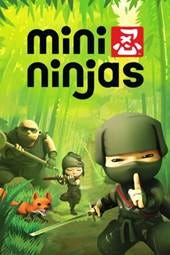

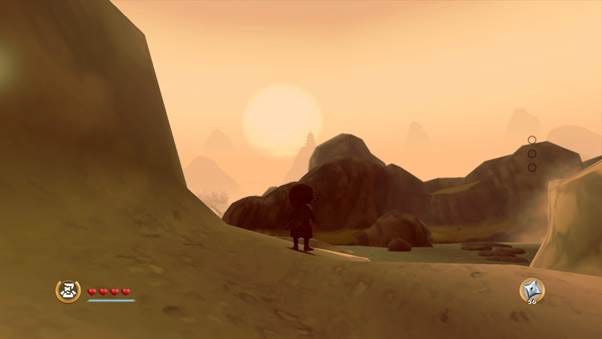
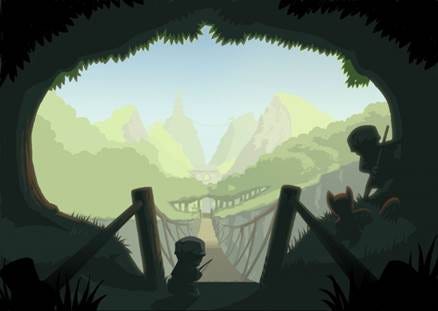
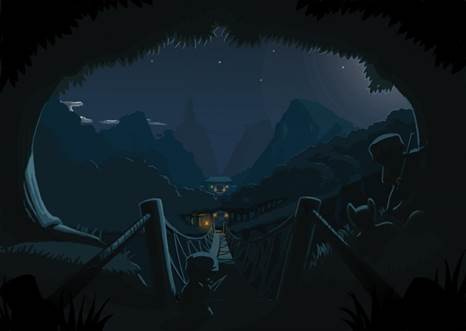

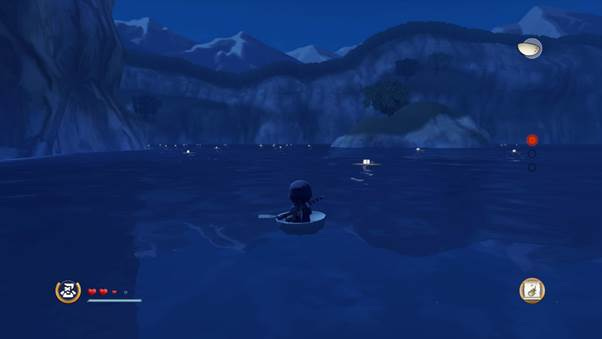
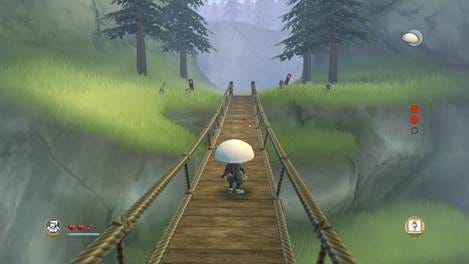

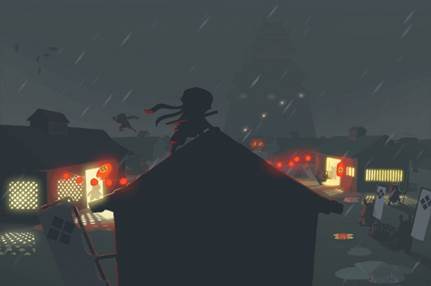



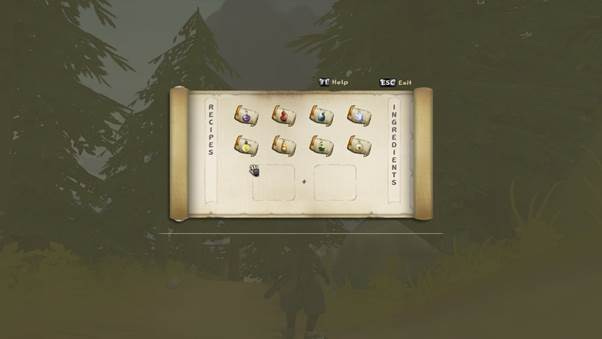
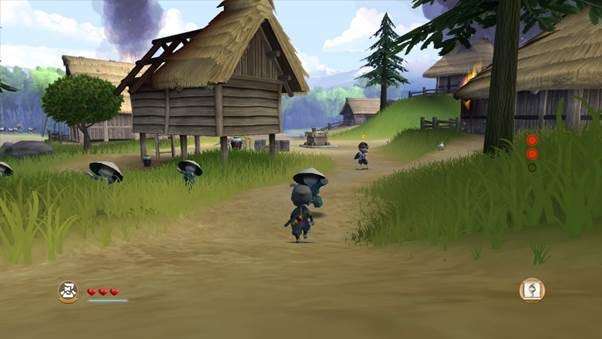






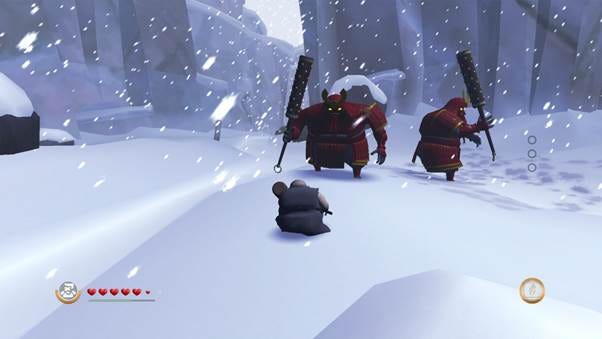
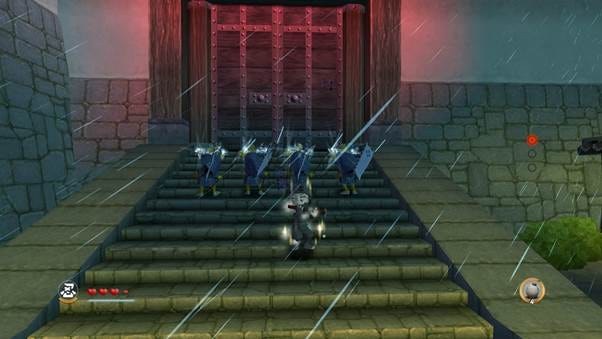
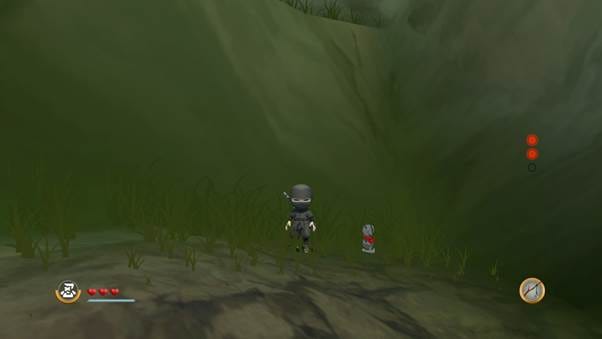


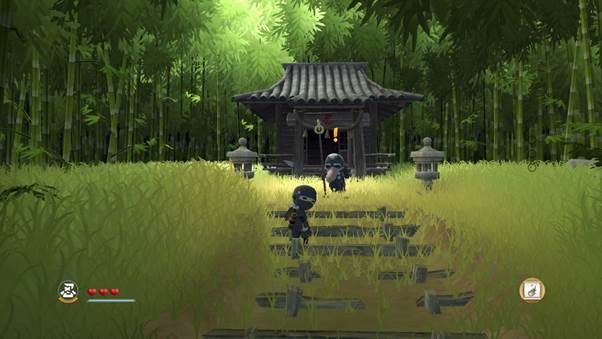
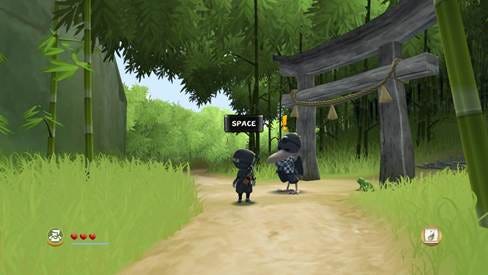
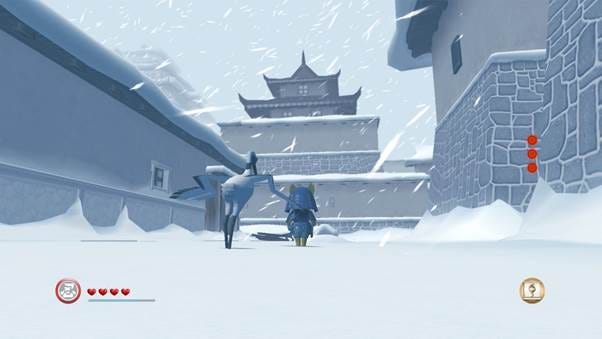
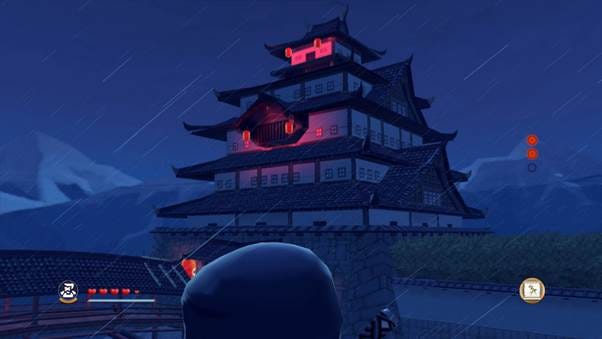






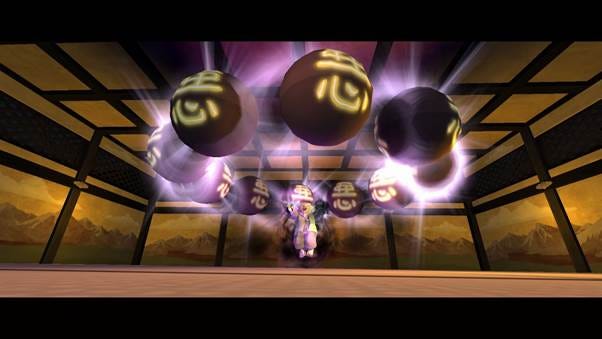

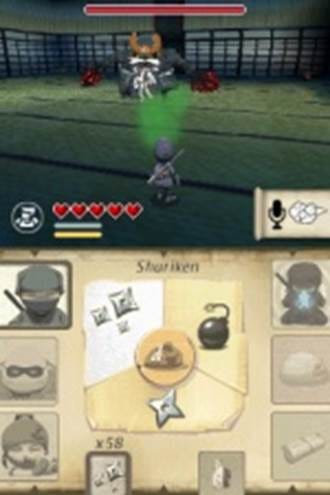
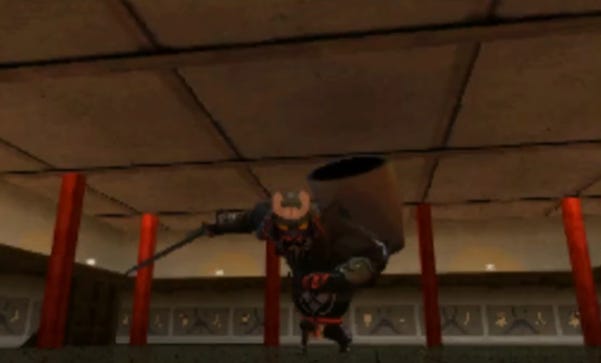
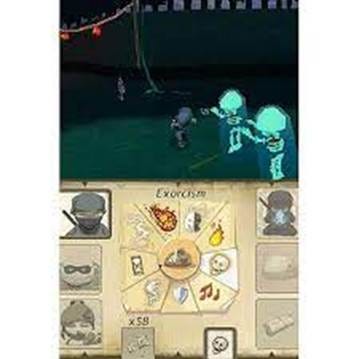
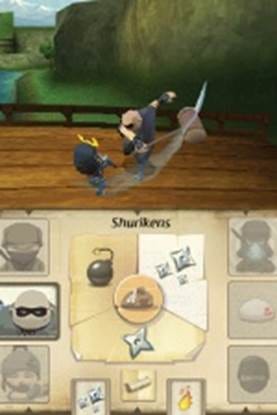
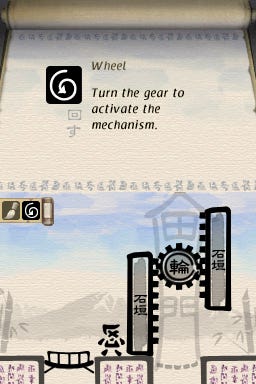
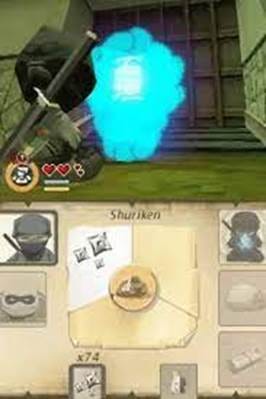



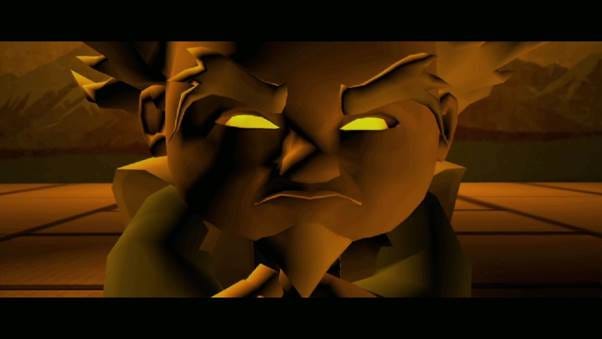

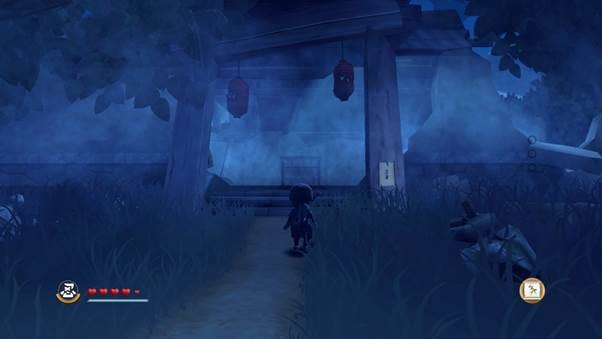




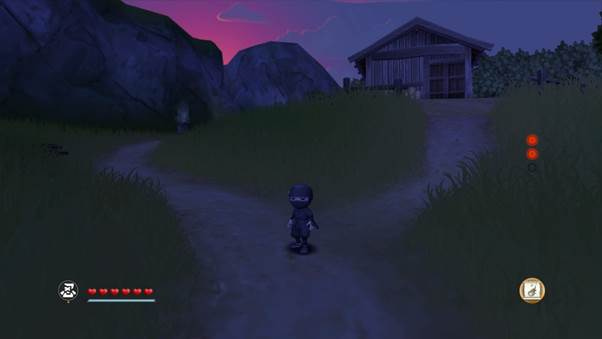
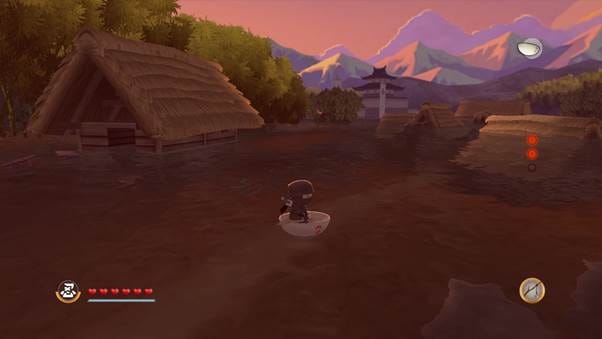
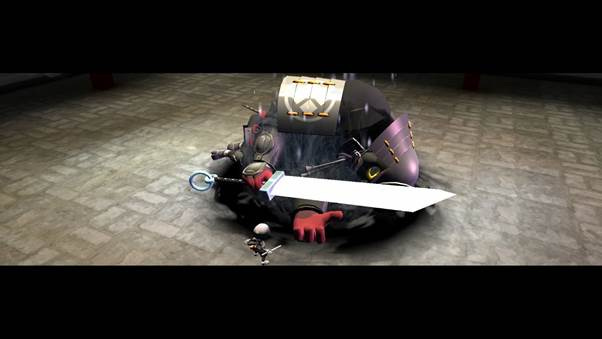
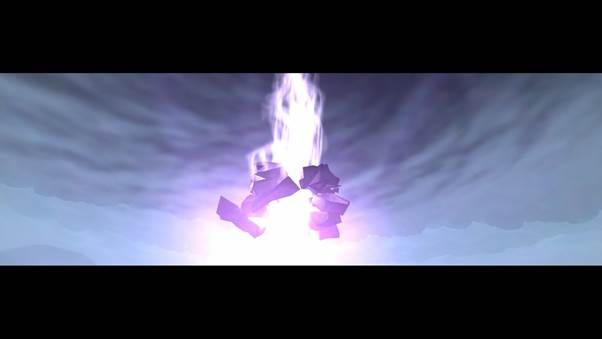

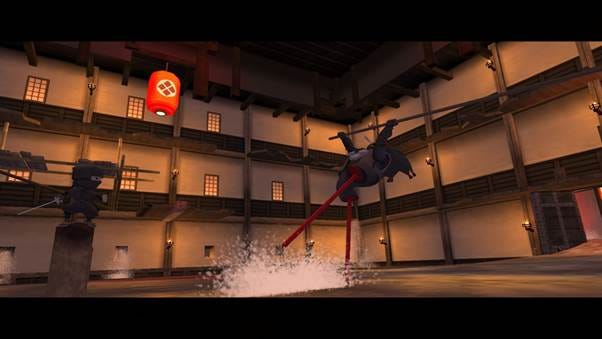
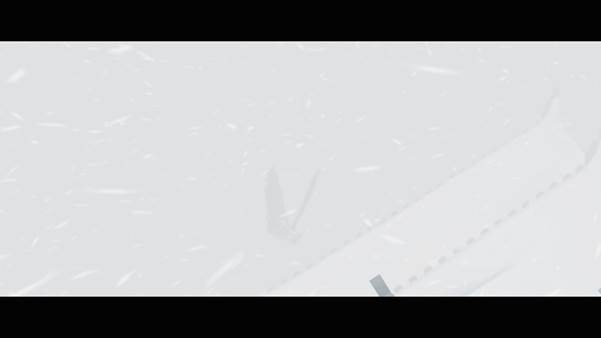
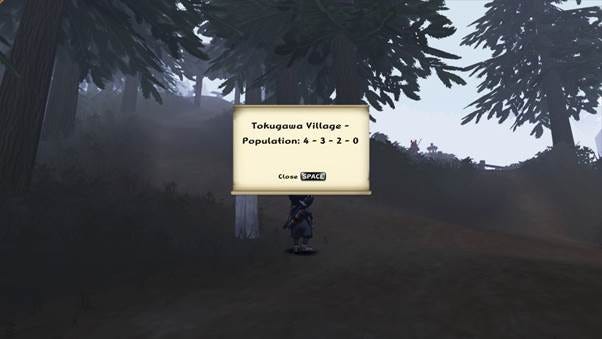

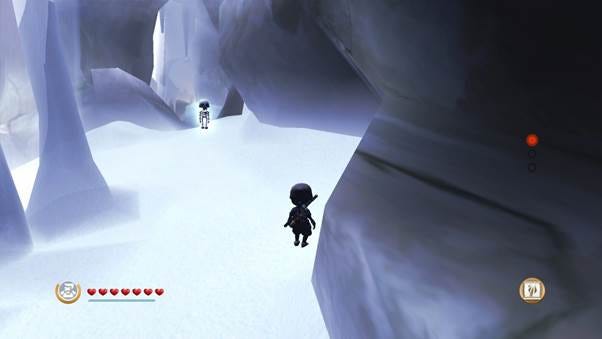


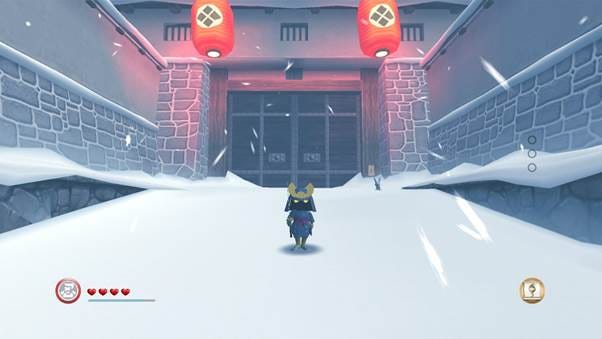





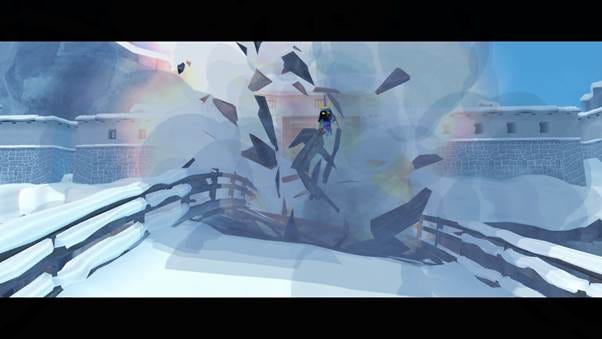

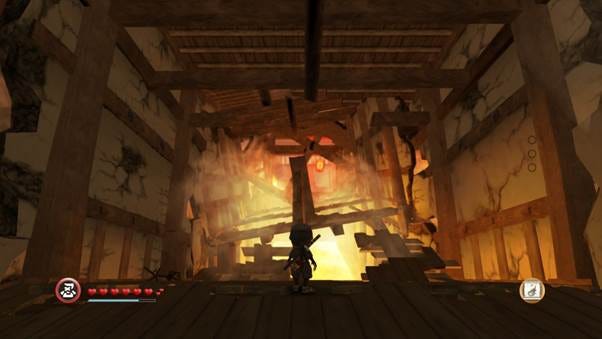
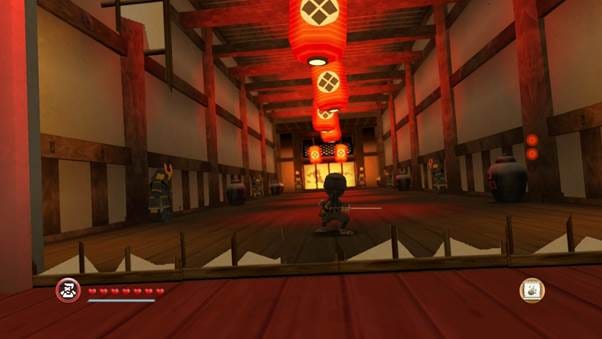
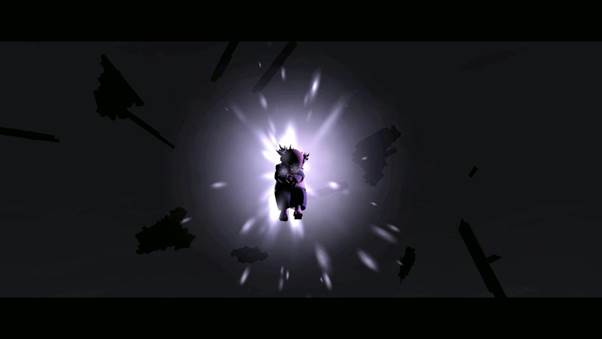

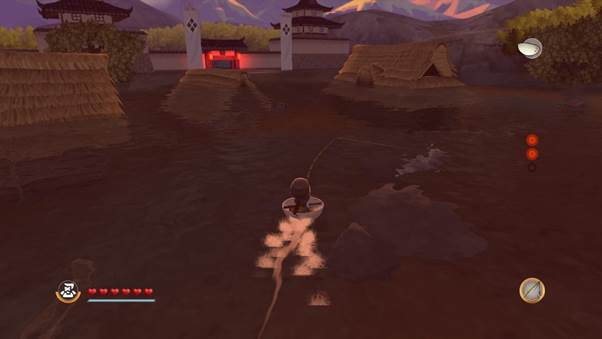
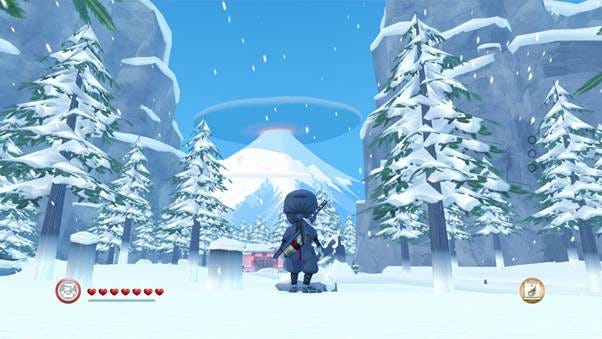



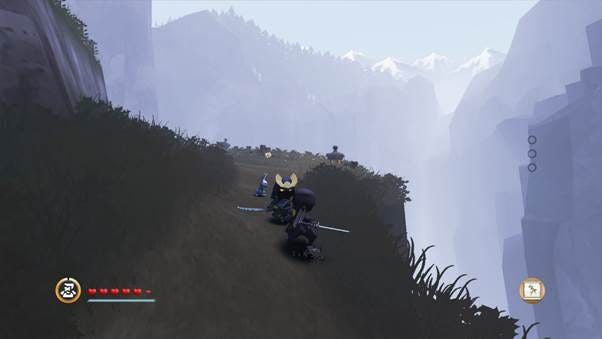


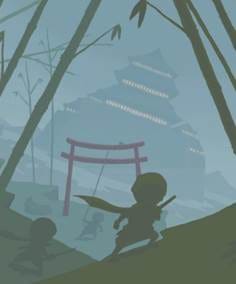
Had no idea this game even existed, interesting.